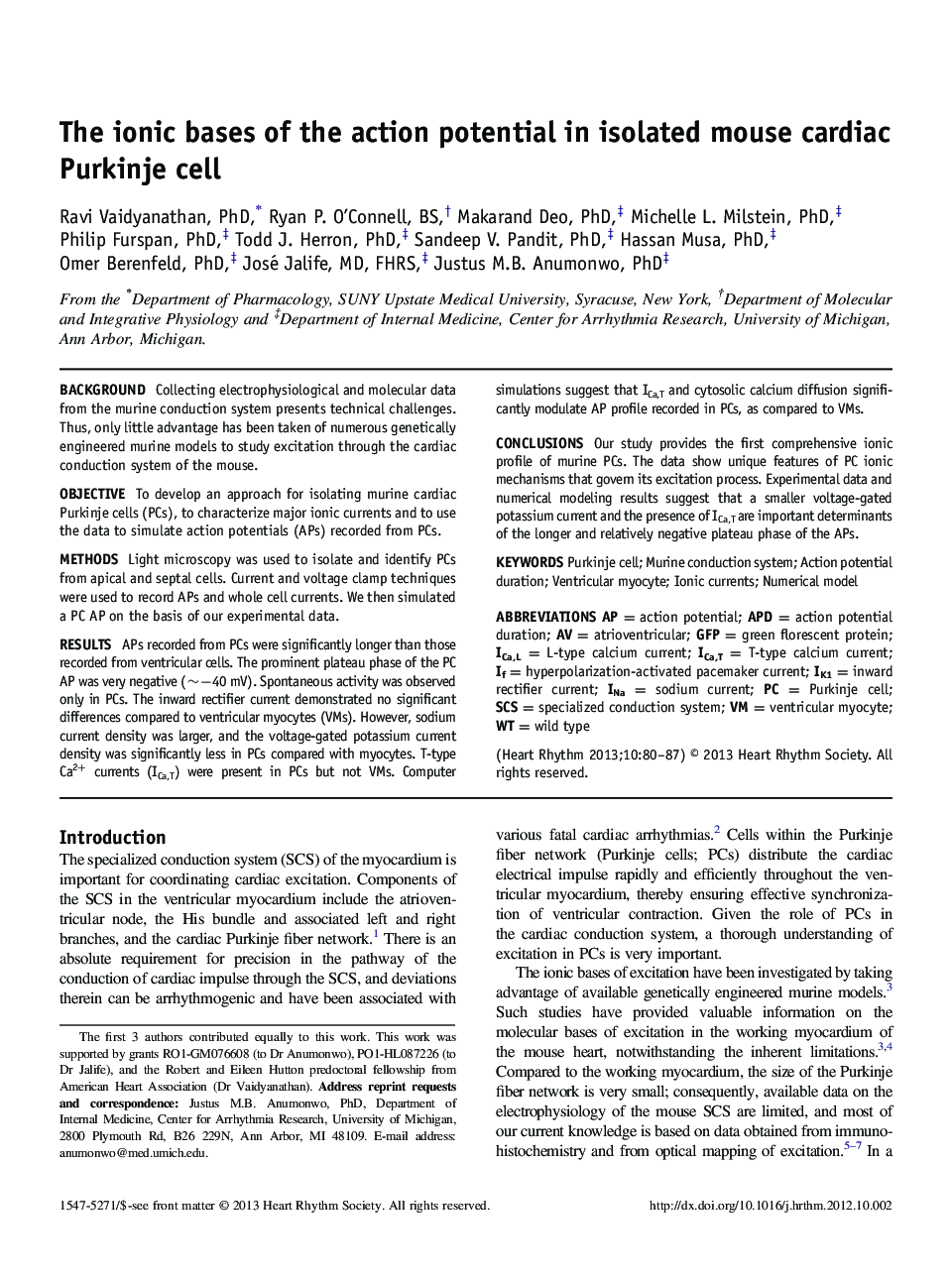| Article ID | Journal | Published Year | Pages | File Type |
|---|---|---|---|---|
| 2922689 | Heart Rhythm | 2013 | 8 Pages |
BackgroundCollecting electrophysiological and molecular data from the murine conduction system presents technical challenges. Thus, only little advantage has been taken of numerous genetically engineered murine models to study excitation through the cardiac conduction system of the mouse.ObjectiveTo develop an approach for isolating murine cardiac Purkinje cells (PCs), to characterize major ionic currents and to use the data to simulate action potentials (APs) recorded from PCs.MethodsLight microscopy was used to isolate and identify PCs from apical and septal cells. Current and voltage clamp techniques were used to record APs and whole cell currents. We then simulated a PC AP on the basis of our experimental data.ResultsAPs recorded from PCs were significantly longer than those recorded from ventricular cells. The prominent plateau phase of the PC AP was very negative (∼−40 mV). Spontaneous activity was observed only in PCs. The inward rectifier current demonstrated no significant differences compared to ventricular myocytes (VMs). However, sodium current density was larger, and the voltage-gated potassium current density was significantly less in PCs compared with myocytes. T-type Ca2+ currents (ICa,T) were present in PCs but not VMs. Computer simulations suggest that ICa,T and cytosolic calcium diffusion significantly modulate AP profile recorded in PCs, as compared to VMs.ConclusionsOur study provides the first comprehensive ionic profile of murine PCs. The data show unique features of PC ionic mechanisms that govern its excitation process. Experimental data and numerical modeling results suggest that a smaller voltage-gated potassium current and the presence of ICa,T are important determinants of the longer and relatively negative plateau phase of the APs.
